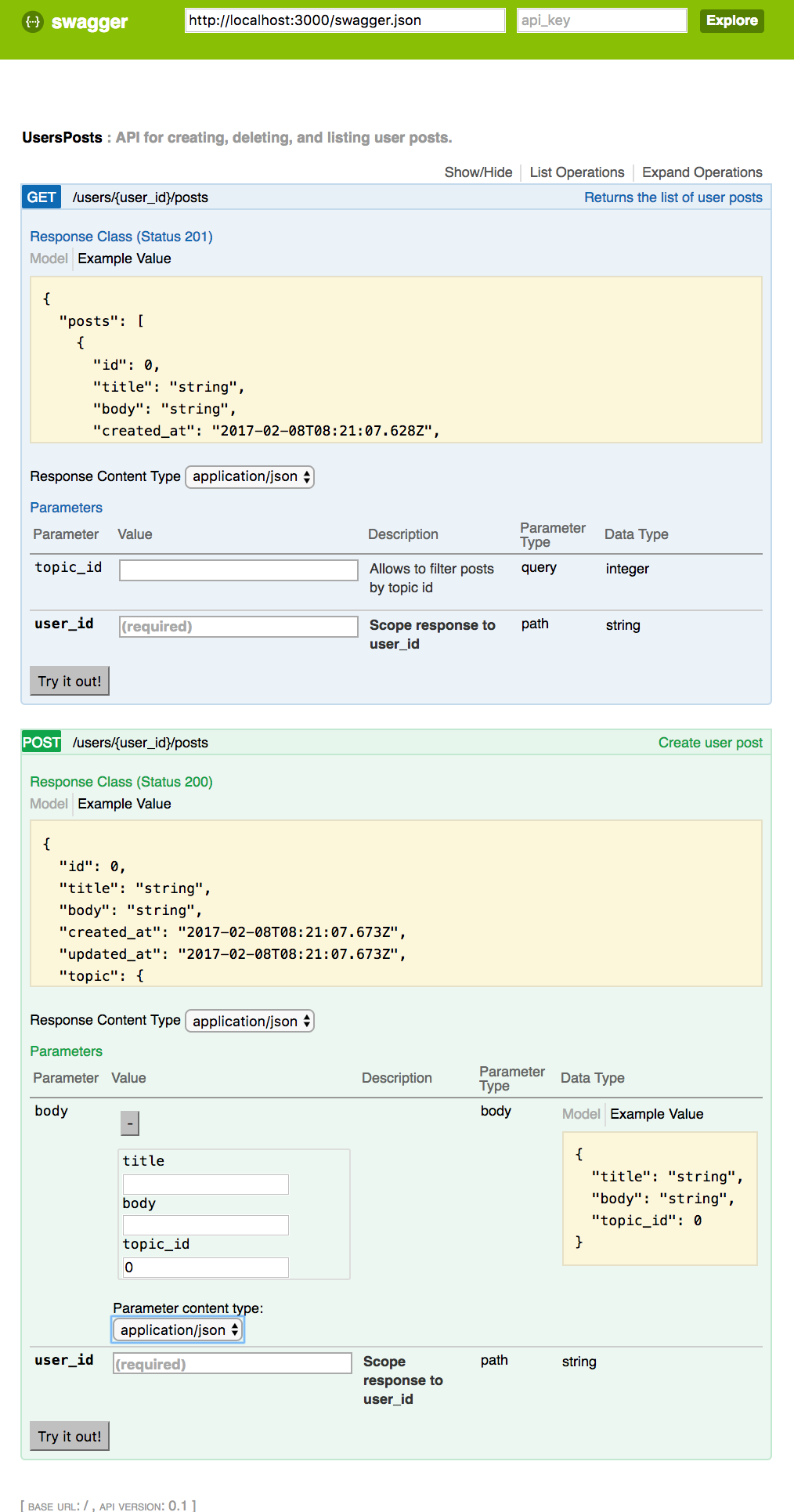Swaggard is a Rails Engine that can be used to document a REST api. It does this by generating a json that is compliant with Swagger and displaying it using Swagger-ui. This gem is inspired and based on SwaggerYard by Chris Trinh.
The main reason this gem exists is to avoid having to write by hand some information and use what rails already give us ie: controllers names and methods paths.
And also:
- Bring support for Rails 4.
- Bring support for Swagger 2.
- Bring support for models (serializers).
- Bring support for form and body params.
- and more...
Put Swaggard in your Gemfile:
gem 'swaggard'
Install the gem with Bundler:
bundle install
Place your configuration in a your rails initializers
# config/initializers/swaggard.rb
Swaggard.configure do |config|
config.api_version = '0.1'
config.doc_base_path = 'http://swagger.example.com/doc'
config.api_base_path = 'http://swagger.example.com/api'
end
Mount your engine
# config/routes.rb
mount Swaggard::Engine, at: '/swagger'
Access your service documentation
open http://localhost:3000/swagger
Access the raw swagger json
open http://localhost:3000/swagger.json
By just using Swaggard you'll get documentation for the endpoints that exist on your service: http method, path, path params. And grouping will be done based on the controller that holds each path.
This is fine base but you should add more documentation in order to provide more information of the expected inputs and outputs or even change the grouping of the endpoints.
Here is a example of how to use Swaggard
# app/controllers/users/posts_controller.rb
# User posts
#
# API for creating, deleting, and listing user posts.
class User::PostsController < ActionController::Base
# Returns the list of user posts
#
# @response_class Array<PostSerializer>
def index
...
end
# Create user post
#
# @body_parameter [string] title
# @body_parameter [string] body
# @body_parameter [string] topic_id
#
# @response_class PostSerializer
def create
...
end
end
# app/serializers/post_serializer.rb
# @attr [integer] id
# @attr [string] title
# @attr [string] body
# @attr [date-time] created_at
# @attr [date-time] updated_at
# @attr [TopicSerializer] topic
class PostSerializer < ActiveModel::Serializer
attribute :id
attribute :title
attribute :body
attribute :created_at
attribute :updated_at
has_one :topic, serializer: TopicSerializer
end
# app/serializers/topic_serializer.rb
# @attr [integer] id
# @attr [string] name
# @attr [date-time] created_at
# @attr [date-time] updated_at
class TopicSerializer < ActiveModel::Serializer
attribute :id
attribute :name
attribute :created_at
attribute :updated_at
end
Will generate
Swaggard supports two types of authentication: header and query.
You can configure it as follows:
# config/initializers/swaggard.rb
Swaggard.configure do |config|
config.authentication_type = 'header' # Defaults to 'query'
config.authentication_key = 'X-AUTH-TOKEN' # Defaults to 'api_key'
config.authentication_value = 'your-secret-key' # Initial value for authentication. Defaults to ''
end
Even if you provide a authentication_value you can later change it from the ui.
Chris Trinh author of SwaggerYard in which this gem is inspired and used a base.
